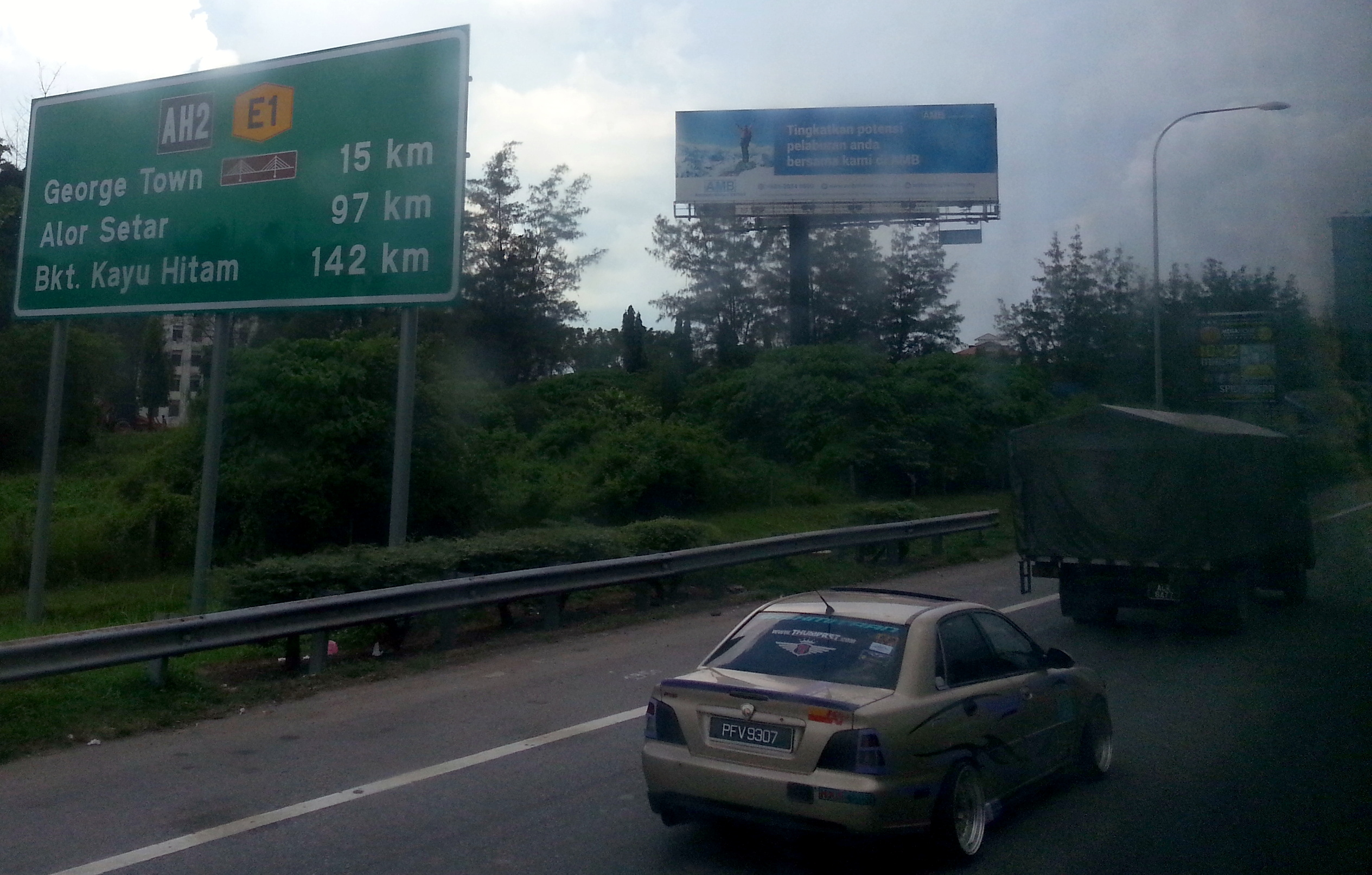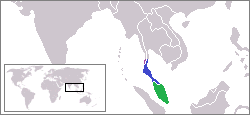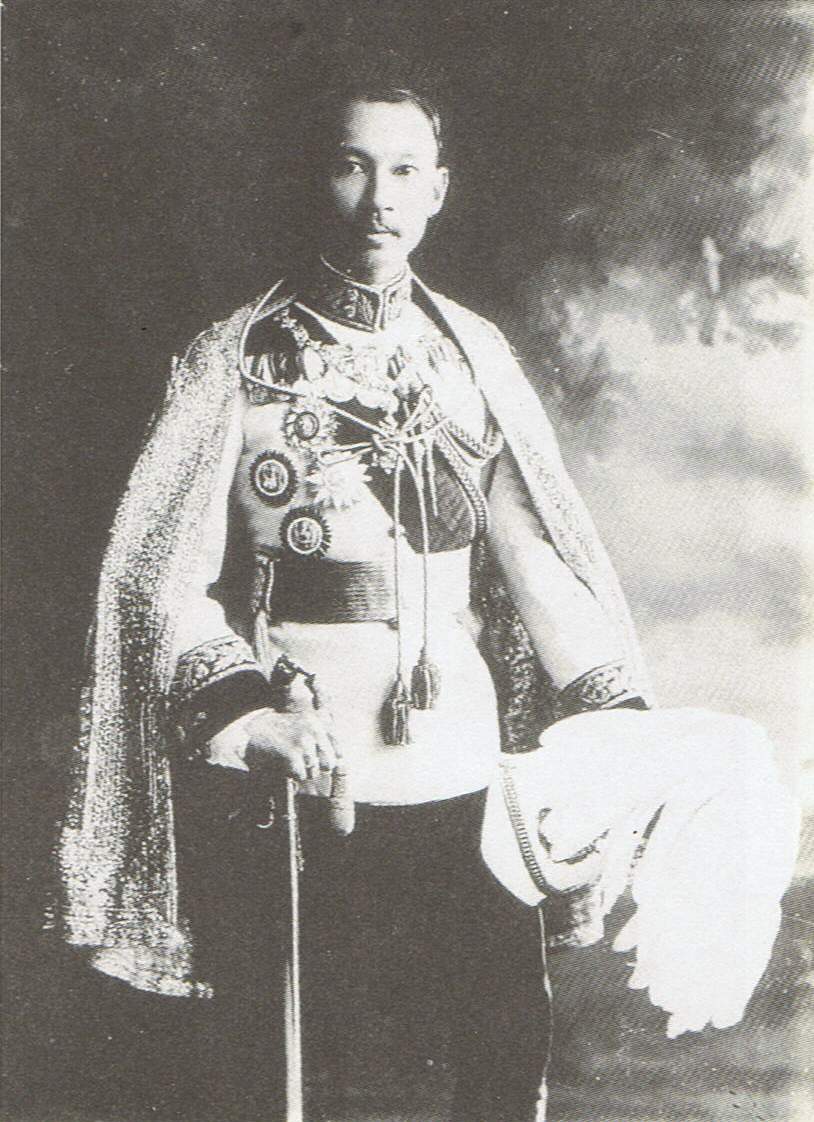|
Surat Thani
Surat Thani ( th, สุราษฎร์ธานี, ) is a city in Amphoe Mueang Surat Thani, Surat Thani Province, southern Thailand. It lies south of Bangkok. It is the capital of Surat Thani Province. The city has a population of 132,040 (2019), and an area of . The city's population density is 1,914 inhabitants per km2. Surat Thani is located near the mouth of the Tapi River on the Gulf of Thailand. The city offers no major tourist attractions in itself, and is mainly known to tourists as the jumping-off point to Ko Samui, Ko Tao, and Ko Pha Ngan. It is the regional commercial center, with a seaport dealing in the main products of the province, rubber and coconuts. Toponymy The city received its name, which means "city of good people", by King Vajiravudh (Rama VI) in 1915. The name was given to the city due to the intense devotion of the locals to Buddhism. Previously the city was known as Bandon ( th, บ้านดอน), meaning "village on higher ground". ... [...More Info...] [...Related Items...] OR: [Wikipedia] [Google] [Baidu] |
Surat Thani Airport
Surat Thani International Airport ( th, ท่าอากาศยานสุราษฎร์ธานี) is an international airport located in Phunphin District, Surat Thani Province, in Southern Thailand. The airport, 21 kilometres west of Surat Thani City, also is home to the Royal Thai Air Force (RTAF) squadrons. Surat Thani International Airport has a single paved runway. It is the tenth-busiest airport in Thailand in terms of passengers, handling more than two million passengers annually. Airlines and destinations Terminated *Thai Airways Company - Bangkok–Don Mueang *Thai Airways International - Bangkok–Don Mueang, Bangkok–Suvarnabhumi *Thai Lion Air - Chiang Mai, Hat Yai Statistics Passengers History Donnok airport Surat Thani Airport's predecessor is known locally as Donnok Airport (). It is located around 3 kilometres away from Surat Thani City, and has a single, gravel paved runway, 800 meters in length. Later, the runway was ex ... [...More Info...] [...Related Items...] OR: [Wikipedia] [Google] [Baidu] |
Tapi River, Thailand
The Tapi (or Tapee) river ( th, แม่น้ำตาปี, , ) is the longest river in southern Thailand. The river originates at Khao Luang mountain in Nakhon Si Thammarat Province, and empties into the Gulf of Thailand at Bandon Bay near the town of Bandon. It has a length of . The river drains an area of and in 1997 had a yearly discharge of or per year. The Phum Duang River (or Khiri Rat River), which drains another west of the Tapi watershed, joins the estuary west of Surat Thani in Phunphin district. The river was named on 29 July 1915, after the river Tapi in Surat, India, shortly after the town of Surat Thani was named after the town Surat in Gujarat, India. The island of Ko Lamphu Ko Lamphu (เกาะลำพู) is a river island on the Tapi River in Thailand. It is located near Surat Thani's city centre, about from the river's mouth. It is connected to the mainland by a bridge near the city pillar shrine. Ko Lamphu ... (เกาะลำพ� ... [...More Info...] [...Related Items...] OR: [Wikipedia] [Google] [Baidu] |
List Of Municipalities In Thailand
Thailand divides its settlements (''thesaban'') into three categories by size: cities (''thesaban nakhon''), towns (''thesaban mueang'') and townships (or subdistrict municipality) (''thesaban tambon''). There are 32 cities as of January 2015. The national capital Bangkok and the special governed city Pattaya fall outside these divisions. They are "self-governing districts". Several agencies issue population figures. Locally registered Thai populations as compiled by the Department of Local Administration (DLA), also known as, "Locally Registered Thai Population". These figures reflect the migrant, upcountry, and seasonal nature of Thai labor flows to the capital and tourist hot spots, yet maintain upcountry registration. Figures are very different from those by National Statistics Office (NSO), which conduct the decennial census counts that attempt to count total resident Thai population + under 1,000 permanent resident foreigners ("Total Thai Population"). Neither of these of ... [...More Info...] [...Related Items...] OR: [Wikipedia] [Google] [Baidu] |
Buddhism
Buddhism ( , ), also known as Buddha Dharma and Dharmavinaya (), is an Indian religion or philosophical tradition based on teachings attributed to the Buddha. It originated in northern India as a -movement in the 5th century BCE, and gradually spread throughout much of Asia via the Silk Road. It is the world's fourth-largest religion, with over 520 million followers (Buddhists) who comprise seven percent of the global population. The Buddha taught the Middle Way, a path of spiritual development that avoids both extreme asceticism and hedonism. It aims at liberation from clinging and craving to things which are impermanent (), incapable of satisfying ('), and without a lasting essence (), ending the cycle of death and rebirth (). A summary of this path is expressed in the Noble Eightfold Path, a training of the mind with observance of Buddhist ethics and meditation. Other widely observed practices include: monasticism; " taking refuge" in the Buddha, the , and the ; ... [...More Info...] [...Related Items...] OR: [Wikipedia] [Google] [Baidu] |
Asian Highway
The Asian Highway Network (AH), also known as the Great Asian Highway, is a cooperative project among countries in Asia and the United Nations Economic and Social Commission for Asia and the Pacific (ESCAP) to improve their connectivity via highway systems. It is one of the three pillars of the Asian Land Transport Infrastructure Development (ALTID) project, endorsed by the ESCAP commission at its 48th session in 1992, comprising Asian Highway, Trans-Asian Railway (TAR) and facilitation of land transport projects. Agreements have been signed by 32 countries to allow the highway to cross the continent and also reach to Europe. Some of the countries taking part in the highway project are India ( Look-East connectivity projects), Sri Lanka, Pakistan, China, Iran, Japan, South Korea, Nepal and Bangladesh. Most of the funding comes from the larger, more advanced Asian nations such as China, South Korea and Singapore as well as international agencies such as the Asian Development Ban ... [...More Info...] [...Related Items...] OR: [Wikipedia] [Google] [Baidu] |
Nakhon Si Thammarat
Nakhon Si Thammarat Municipality ( th, เทศบาลนครนครศรีธรรมราช, ; from Pali ''Nagara Sri Dhammaraja'') is a municipality (''thesaban nakhon'') in Southern Thailand, capital of Nakhon Si Thammarat province and Mueang Nakhon Si Thammarat district. It is about south of Bangkok, on the east coast of the Malay Peninsula. The city was the administrative center of southern Thailand during most of its history. Originally a coastal city, silting moved the coastline away from the city. The city has a much larger north to south extension than west to east, which dates back to its original location on a flood-save dune. The modern city centre on the train station is north of Old Town. As of 2019, the city had a population of 102,152. Toponymy Thai honorific ''Sri'' or ''Si'' is from Sanskrit Sri; , from Dharma; , from Raja. ''Dhammaraja'' means "righteous ruler", an important Theravada concept. History Nakhon Si Thammarat is one of the oldes ... [...More Info...] [...Related Items...] OR: [Wikipedia] [Google] [Baidu] |
Phunphin
Phunphin ( th, พุนพิน, ) is a district (''amphoe'') in Surat Thani province in the south of Thailand. Tha Kham is the principal town of the district. In 2014, the population was 73,067. Geography Neighboring districts are (from north clockwise): Tha Chang, Bandon, Ban Na Doem, Khian Sa, Khiri Rat Nikhom, and Vibhavadi. It has a short coastline on Bandon Bay to the northeast. The main rivers of the district are the Tapi and its tributary Phum Duang, which flows into the Tapi at the town of Tha Kham. History The district's name was changed from Tha Kham to Phunphin in 1939. Administration Central administration Phunphin district is divided into 16 sub-districts (''tambons''), which are further subdivided into 98 administrative villages (''mubans''). Local administration There is one town (''thesaban mueang'') in the district: * Tha Kham (Thai: ) consisting of parts of sub-district Tha Kham. There are 16 sub-district administrative organizations (S ... [...More Info...] [...Related Items...] OR: [Wikipedia] [Google] [Baidu] |
State Railway Of Thailand
The State Railway of Thailand (SRT) ( th, การรถไฟแห่งประเทศไทย, abbrev. รฟท., ) is the state-owned rail operator under the jurisdiction of the Ministry of Transport in Thailand. History The SRT was founded as the Royal State Railways of Siam (RSR) in 1890. King Chulalongkorn ordered the Department of Railways to be set up under the Department of Public Works and Town and Country Planning. Construction of the Bangkok-Ayutthaya railway (), the first part of the Northern Line, was started in 1890 and inaugurated on 26 March 1897. The Thonburi-Phetchaburi line (), later the Southern Line, was opened on 19 June 1903. The first railway commander of the RSR was Prince Purachatra Jayakara (Krom Phra Kamphaeng Phet Akkarayothin). The Northern Line was originally built as , but in September 1919 it was decided to standardize on and the Northern Line was regauged during the next ten years. On 1 July 1951, RSR changed its name to the prese ... [...More Info...] [...Related Items...] OR: [Wikipedia] [Google] [Baidu] |
Bangkok
Bangkok, officially known in Thai language, Thai as Krung Thep Maha Nakhon and colloquially as Krung Thep, is the capital and most populous city of Thailand. The city occupies in the Chao Phraya River delta in central Thailand and has an estimated population of 10.539 million as of 2020, 15.3 percent of the country's population. Over 14 million people (22.2 percent) lived within the surrounding Bangkok Metropolitan Region at the 2010 census, making Bangkok an extreme primate city, dwarfing Thailand's other urban centres in both size and importance to the national economy. Bangkok traces its roots to a small trading post during the Ayutthaya Kingdom in the 15th century, which eventually grew and became the site of two capital cities, Thonburi Kingdom, Thonburi in 1768 and Rattanakosin Kingdom (1782–1932), Rattanakosin in 1782. Bangkok was at the heart of the modernization of Siam, later renamed Thailand, during the late-19th century, as the country faced pressures from the ... [...More Info...] [...Related Items...] OR: [Wikipedia] [Google] [Baidu] |
Thesaban Nakhon
Thesaban ( th, เทศบาล, , ) are the municipalities of Thailand. There are three levels of municipalities: city, town, and sub-district. Bangkok and Pattaya are special municipal entities not included in the ''thesaban'' system. The municipalities assume some of the responsibilities which are assigned to the districts (''amphoe'') or communes (''tambon'') for non-municipal (rural) areas. Historically, this devolution of central government powers grew out of the Sukhaphiban () sanitary districts first created in Bangkok by a royal decree of King Chulalongkorn in 1897. The ''thesaban'' system was established in the Thesaban Organization Act of 1934 ( th, พระราชบัญญัติจัดระเบียบเทศบาล พุทธศักราช ๒๔๗๖),The Royal Gazetteพระราชบัญญัติจัดระเบียบเทศบาล พุทธศักราช ๒๔๗๖, Vol. 51, Page 82-107.24 Apr 1934. Retri ... [...More Info...] [...Related Items...] OR: [Wikipedia] [Google] [Baidu] |
Thesaban Mueang
Thesaban ( th, เทศบาล, , ) are the municipalities of Thailand. There are three levels of municipalities: city, town, and sub-district. Bangkok and Pattaya are special municipal entities not included in the ''thesaban'' system. The municipalities assume some of the responsibilities which are assigned to the districts (''amphoe'') or communes (''tambon'') for non-municipal (rural) areas. Historically, this devolution of central government powers grew out of the Sukhaphiban () sanitary districts first created in Bangkok by a royal decree of King Chulalongkorn in 1897. The ''thesaban'' system was established in the Thesaban Organization Act of 1934 ( th, พระราชบัญญัติจัดระเบียบเทศบาล พุทธศักราช ๒๔๗๖),The Royal Gazetteพระราชบัญญัติจัดระเบียบเทศบาล พุทธศักราช ๒๔๗๖, Vol. 51, Page 82-107.24 Apr 1934. Retri ... [...More Info...] [...Related Items...] OR: [Wikipedia] [Google] [Baidu] |
.jpg)



.jpg)
